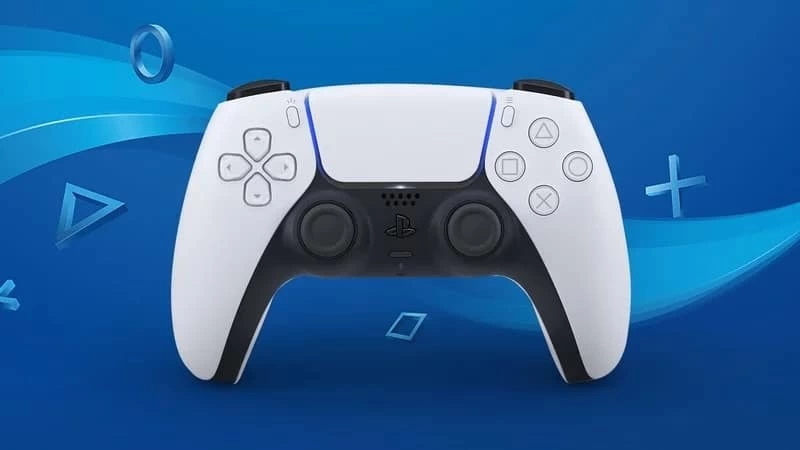Sony Playstation 5
Nickname:
PS5
Predecessor:
PlayStation 4
Successor:
-
Release Date:
11/11/2020
Discontinued Date:
-
Additional Sizes:
Blue Ray, Digital
Display Palette:
-
Initial Price:
$499















Supported Game Media:
25.0M
Sales
530
Games
Sony Interactive Entertainment's PlayStation 5 (officially known as PS5) is a video game console that was released in North and South America, Australia, Japan, and Europe on November 19, 2020. It is the successor to the PlayStation 4 and competes with both Nintendo's Switch and Microsoft's Xbox Series X.
Creation of PlayStation 5: The backstory
After the PlayStation 4 launched, Mark Cerny, the PlayStation console line's lead architect, implemented a two-year feedback cycle. As part of this process, Sony visited its first-party developers twice a year to hear how future console refreshes might improve the shortcomings of its current hardware.
As a result of Sony's research, Jim Ryan, the CEO of Sony Interactive Entertainment, said they had been considering the possibility of creating a "low-cost, reduced-spec" PlayStation 5, as Microsoft did with its Xbox Series X and Xbox Series S. But, they concluded that such consoles do not sell well, becoming outmoded too quickly.
So, what did Sony decide after all? Let’s cut to the chase and dig into its technical aspects to find out!
Technical Aspects of Playstation 5
Sony and AMD collaborated on a system on a chip (SoC) for the PlayStation 5, which includes an AMD Zen 2 CPU with eight cores running at 3.5GHz with variable frequency. AMD's RDNA 2 graphics architecture also forms the basis for the integrated GPU. GPUs typically run at a variable frequency capped at 2.23 GHz, enabling them to achieve a peak performance of 10 teraFLOPS. Ray-tracing, a rendering method that allows realistic lighting and reflections, is supported by the GPU. 16GB of GDDR6 SDRAM is integrated into the console, along with Bluetooth 5.1, 802.11ax, and WiFi 6.
The SmartShift technology from AMD allows the CPU and GPU to be monitored via a special boost system that adjusts their frequencies based on their current activity. This results in an ideal constant power draw and model SoC performance profile.
A 120 mm diameter, 45 mm thick double-sided cooling fan is included as part of the cooling system. There is also a liquid metal thermal conductor that sits between the SoC and the heat sink. The system includes a 350-watt power supply. With the PlayStation 5, the suspended gameplay state consumes less energy than with the PlayStation 4. In addition, with Tempest Engine, the console can support hundreds of sound sources simultaneously, compared to the PlayStation 4.
All PlayStation 5 Specs
Price: $499
Release date: November 12 2020
Processor: x86-64-AMD Ryzen™ Zen 2 - 8 Cores on 3.5GHz (variable frequency)
GPU: AMD Radeon™ RDNA 2-based - 10.28 teraflops, 36 CUs on 2.23GHz (variable frequency)
GPU Architecture: AMD Radeon RDNA 2-based graphics engine
Ray Tracing: Yes
RAM: 16GB GDDR6, 256-bit
Memory/Interface: 16GB GDDR6/256-bit
Memory Bandwidth: 448GB / s
Storage: Custom 825GB SSD
Maximum resolution: 8K
Optical drive: 4K UHD Blu-ray drive
External storage: USB HDD support
Expandable Storage: NVMe SSD Slot
Maximum frame rate: 120 fps
Key features: Quick Resume for suspending multiple games, Dynamic Latency Input, Variable Refresh Rate
Networking: Ethernet (10BASE-T, 100BASE-TX, 1000BASE-T) IEEE 802.11 a/b/g/n/ac/ax. Bluetooth 5.1
Power: 350W
Weight: 4.5kg
PS5 Game Disc: Ultra HD Blu-ray, up to 100GB/disc
Audio: "Tempest" 3D AudioTech
Video Out: HDMI Out port. Support of 4K 120Hz TVs, VRR (specified by HDMI ver 2.1)
Dimensions: 390mm x 104mm x 260mm (width x height x depth)
CPU: x86-64-AMD Ryzen Zen 8 Cores / 16 Threads at 3.5GHz (variable frequency)
Internal Storage: Custom 825GB SSD. IO Throughput: 5.5GB/s (Raw), Typical 8-9GB/s (Compressed)
Expandable Storage: NVMe SSD Slot
External Storage: USB HDD Support
Optical Drive (optional): Ultra HD Blu-ray (66G/100G) ~10xCAV. BD-ROM (25G/50G) ~8xCAV. BD-R/RE (25G/50G) ~8x CAV. DVD ~3.2xCLV
Input / Output: USB Type-A port (Hi-Speed USB). USB Type-A port (Super Speed USB 10Gbps) x2. USB Type-C port (Super Speed USB 10Gbps)
Networking: Ethernet (10BASE-T, 100BASE-TX, 1000BASE-T)
IEEE 802.11 a/b/g/n/ac/ax. Bluetooth 5.1
How much is a PlayStation 5: $499
DualSense Controller
Due to its renovations, the DualSense wireless controller for the PlayStation 5 took the industry by storm even before its release on April 7, 2020. With modifications influenced by discussion with game designers and players, this controller is based on the DualShock controller previously released. Using voice coil actuators, the DualSense controller has adaptive triggers with force feedback, so players can adjust the resistance as they see fit, supporting experiences such as virtually drawing an arrow from a bow. As with the DualShock 4, the DualSense's buttons remain the same, but the "Share" button has been renamed "Create" to accommodate new ways for players to create and share content. This version includes an improved controller speaker and a built-in microphone array so players can communicate using only the controller. There are two-tone colors, primarily white and black facings, with the black piece easily removable. To make the touchpad more ergonomic, the light bar has been repositioned to the sides. In addition to USB-C connectivity, the controller has a high-quality battery and an audio jack. As an Easter egg, it has miniature versions of the four PlayStation button symbols (cross, circle, square, triangle).
DualSense Edge controller
There will be replaceable stick modules, multiple profiles, and an option to relocate map inputs on the DualSense Edge. Sony unveiled the DualSense Edge for the PlayStation 5 in August 2022.
Want to learn more about Gaming Consoles?
Enter
© 2018 - 2025, All rights reserved, Game
Medium Team.
DEVELOPED WITH
AND TONS OF






